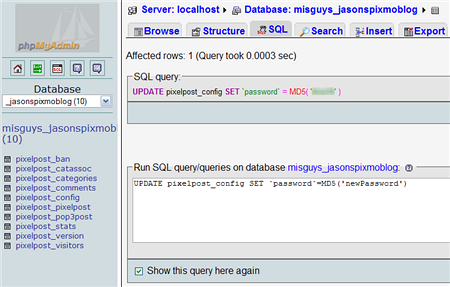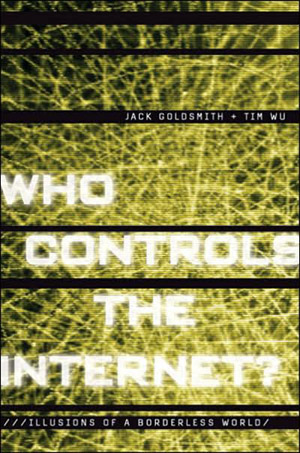by Jason Prahl | Jul 22, 2006 | Blog, Computer Tips, Microsoft Windows
 I recently exchanged my Motorola Razr for a Treo 650 with a data plan through Alltel. So far I really like it. There are a couple of things that annoy me about the Palm OS, but there are just as many things about the Pocket PC OS that annoy me too.
I recently exchanged my Motorola Razr for a Treo 650 with a data plan through Alltel. So far I really like it. There are a couple of things that annoy me about the Palm OS, but there are just as many things about the Pocket PC OS that annoy me too.
So, I setup the Palm Hotsync to sync my Outlook calendar, contacts and such with the Treo 650. After messing with installing applications and playing around a bit the sync began to take a really long time.
A normal sync only takes at most 30 seconds and the sync began to take as long as 4 to 5 minutes. After these sync’s I figured there would be some sort of error message or something but there wasn’t. The log didn’t show anything out of the ordinary. I began uninstalling applications even to the point of nuking the thing and starting over. This worked once, but the long pauses returned.
I messed with the Palm desktop software a bit and tried renaming my Hotsync user, this seemed to work and then the pauses returned and this time renaming the user didn’t work.
What on earth is going on? I have the latest firmware and the latest Palm Desktop. Finally a moment of brilliance hits me and I wonder if it has anything to do with Outlook itself. I open Outlook, which I have setup to connect to an exchange server through cached mode. In cached mode you don’t have to be connected to the exchange server to open outlook and see your current data, you just don’t have the most current data that’s on the exchange server.
Then I connected to my VPN and allowed Outlook to connect to the server and this time the Hotsync returned to normal. Close Outlook, disconnect from the VPN and try Hotsync…long pause returns.
So it looks like if you are syncing with Outlook setup to communicate directly with an exchange server (not through Pop3 or SMTP) and are using cached mode you need to have a live connection to the exchange server, which in my case is done using a VPN connection when I’m not in the office. Live and learn huh?
by Jason Prahl | Jul 14, 2006 | Blog, Computer Tips, Microsoft Windows
 If you use Microsoft Exchange for your email you should take some time to run the Exchange Best Practices Tool. I ran it on our Exchange server and luckily didn’t find any major flaws in our configuration, but the tool did point out several things that we could be doing differently.
If you use Microsoft Exchange for your email you should take some time to run the Exchange Best Practices Tool. I ran it on our Exchange server and luckily didn’t find any major flaws in our configuration, but the tool did point out several things that we could be doing differently.
One thing that we didn’t have configured was the Exchange Intelligent Message Filter which we were not utilizing. I recently found out about this filter because of a Microsoft Exchange class I am taking. Any added tools to combat and reduce the amount of spam entering our organization is certainly welcome. This best practice tool told me I didn’t have it enabled and how to turn it on. Just since turning it on I’ve already seen a handful of emails it has blocked that were truly spam and hadn’t been stopped by our third party spam filter Open Relay Filter by Vamsoft (which does do a great job of stopping most spam.)
The tool also pointed out several services that were running on my exchange box that were un-necessary. I was a bit nervous when I went to run it thinking I’d find a bunch of big bad things we had with our Exchange. The tool is available for download for free and is a great tool in securing and maintaining the health of Exchange email systems.
by Jason Prahl | Jul 14, 2006 | Blog, Websites
 I’ve recently started listening to more Podcasts and have really come to enjoy a couple in particular. I mostly listen to those that are tech related and have found several photography related podcasts as well. iTunes tends to be on my list of irritating software but for subscribing to and getting podcasts onto my iPod it works well. (Brandon, no comments from you either!)
I’ve recently started listening to more Podcasts and have really come to enjoy a couple in particular. I mostly listen to those that are tech related and have found several photography related podcasts as well. iTunes tends to be on my list of irritating software but for subscribing to and getting podcasts onto my iPod it works well. (Brandon, no comments from you either!)
Nikonians.com has a podcast page where they have several different podcasts on a variety of topics. The Image Doctors, found on the Nikonians website is a great podcast that covers many different aspects of photography. In a couple of episodes I’ve listened to Jason and Rick have been reviewing different software packages for digital photography workflow and raw file conversion. They have great podcast voices and their interaction together works well.
Tips from the Top Floor is another great podcast by Chris Marquart.
…a short and sweet with non-techy tips that you can put to use immediately. Covers everything from image composition to post processing. No matter if you use a digital point-and-shoot or an expensive digital SLR. Tips for the beginner as well as the professional photographer.
Another interesting podcast comes from the American Photo section on Popular Photography’s website. Host Jay DeFoore interviews different photographers about their work.
If you are into tech related topics 2 podcasts I recommend are This Week In Tech and Engadget. If you are familiar with This Week In Tech you might still go check out their site as it’s had a good overhaul done on it and it looks sharp.
by Jason Prahl | Jul 8, 2006 | Blog, Photography

I’ve been reading a great book called “The Photoshop CS2 Book for Digital Photographers” and I’ve picked up a number of useful tips and tricks. One great one that I thought I’d share is how to add more canvas area using the crop tool. The author of the book Scott Kelby goes on to explain how to do this. When you have the image open that you want to add canvas area to hit the F key to reveal the grey desktop area around your image. Hit D to set your background color to the default of white. Click on the crop tool and create a crop selection within the image. The size and shape of it does not matter much at this point. Once you have your crop selection area you can then resize the selection outside of the borders of your image to include the area you want to add. Hit enter and the new white canvas area will be added to your image. Pretty cool huh? Thanks to Scott Kelby for his excellent book. There are many many more tips and tricks in his book. Even after using Photoshop for several years I’ve learned numerous new things to help with post processing.
by Jason Prahl | Jul 7, 2006 | Blog, Miscellaneous

Peaceful sounds from a Japanese Garden.
Japanese Garden Sounds – (MP3 – 47secs – 736kb)
by Jason Prahl | Jul 6, 2006 | Blog, Miscellaneous
I’m sitting in an airport in Springfield, Missouri waiting to board a flight to Chicago. Brandon and I are headed to the windy city for a couple of days. You can count on lots of shots in the coming weeks, assuming I get some good stuff! See ya in a coupe of days.
by Jason Prahl | Jul 6, 2006 | Blog, Miscellaneous

Fun bowling time with my kids.
Bowling – (MP3 – 19secs – 300kb)
by Jason Prahl | Jul 5, 2006 | Blog, Miscellaneous

I never get tired of singing songs like this in Church.
How Great is our God – (MP3 – 51secs – 811kb)
by Jason Prahl | Jul 5, 2006 | Blog, Computer Tips
 Something happened to one of my Pixelpost installations making my password not work. No problem, I figured I’ll just do the forgot password thing and it should reset my password. Except that didn’t work, I keep getting a error message that says “Database error: Updating the new password failed.” Hmmmm….what now. I remember reading somewhere that if you lose your password you are pretty much hosed.
Something happened to one of my Pixelpost installations making my password not work. No problem, I figured I’ll just do the forgot password thing and it should reset my password. Except that didn’t work, I keep getting a error message that says “Database error: Updating the new password failed.” Hmmmm….what now. I remember reading somewhere that if you lose your password you are pretty much hosed.
So I went to the Pixelpost forums and poked around. Joey from team Pixelpost had left this SQL command for someone else who was having a problem with their password:
UPDATE pixelpost_config SET `password`=MD5(‘*****’)
Change the asterix to your desired new password. You’ll need to run this from within something like phpMyAdmin where you can run SQL commands. Once I did this I was able to get in and work. The reset password function still doesn’t work, but it’s no big deal since I can do it this way.
by Jason Prahl | Jun 29, 2006 | Blog, Books/Reading
 I ran into the library to drop off some stuff my kids had checked out. If you have kids the library should be in the top 10 list of places to frequent for a number of reasons. First of all, kids are like sponges that soak up information and learning and you should be constantly feeding that habit and books are not cheap. It’s summer time and instead of letting your kid zone out and play video games all day long it’s better to channel some of that energy into learning. I’m not talking about rigorous school, but at least something to keep those brain cells growing. The library offers a constant stream of this for free. Secondly, at least our library, has regular activities and sessions to entertain kids. Unless you drop your kids off at daycare staying home with them all day long can be a challenge to give them something useful to do. It can also get expensive. Ok, enough of my preaching about using the public library, back to a book I picked up at the library.
I ran into the library to drop off some stuff my kids had checked out. If you have kids the library should be in the top 10 list of places to frequent for a number of reasons. First of all, kids are like sponges that soak up information and learning and you should be constantly feeding that habit and books are not cheap. It’s summer time and instead of letting your kid zone out and play video games all day long it’s better to channel some of that energy into learning. I’m not talking about rigorous school, but at least something to keep those brain cells growing. The library offers a constant stream of this for free. Secondly, at least our library, has regular activities and sessions to entertain kids. Unless you drop your kids off at daycare staying home with them all day long can be a challenge to give them something useful to do. It can also get expensive. Ok, enough of my preaching about using the public library, back to a book I picked up at the library.
I was browsing the new non-fiction section and saw this book called “Who controls the internet: Illusions of a borderless world.” The geek in me was immediately interested so I grabbed it. It’s very good reading and it raises some interesting discussions about the internet and who is really in control of it.
Although the internet has it’s beginnings tracing back to the late sixties it really began it’s widespread growth and development in the early 80’s. When it really took off from an end user standpoint was in the 90’s with the World Wide Web (which is not the same as the internet).
When the telegraph was invented and began to be used for long distance communications it was said that it would break down barriers and lead to borderless nations. That didn’t really happen and the same has been said with the popularity and reach of the internet. This book goes in and examines this question of control and the idea that the internet is a borderless self governing entity.
In this provocative new book, Jack Goldsmith and Tim Wu tell the fascinating story of the Internet’s challenge to governmental rule in the 1990s, and the ensuing battles with governments around the world. It’s a book about the fate of one idea–that the Internet might liberate us forever from government, borders, and even our physical selves. We learn of Google’s struggles with the French government and Yahoo’s capitulation to the Chinese regime; of how the European Union sets privacy standards on the Net for the entire world; and of eBay’s struggles with fraud and how it slowly learned to trust the FBI. In a decade of events the original vision is uprooted, as governments time and time again assert their power to direct the future of the Internet. The destiny of the Internet over the next decades, argue Goldsmith and Wu, will reflect the interests of powerful nations and the conflicts within and between them.
I have really enjoyed reading this book and for me it’s been one of those that I don’t hardly want to put down.
 I recently exchanged my Motorola Razr for a Treo 650 with a data plan through Alltel. So far I really like it. There are a couple of things that annoy me about the Palm OS, but there are just as many things about the Pocket PC OS that annoy me too.
I recently exchanged my Motorola Razr for a Treo 650 with a data plan through Alltel. So far I really like it. There are a couple of things that annoy me about the Palm OS, but there are just as many things about the Pocket PC OS that annoy me too.
 If you use Microsoft Exchange for your email you should take some time to run the
If you use Microsoft Exchange for your email you should take some time to run the  I’ve recently started listening to more Podcasts and have really come to enjoy a couple in particular. I mostly listen to those that are tech related and have found several photography related podcasts as well. iTunes tends to be on my list of irritating software but for subscribing to and getting podcasts onto my iPod it works well. (Brandon, no comments from you either!)
I’ve recently started listening to more Podcasts and have really come to enjoy a couple in particular. I mostly listen to those that are tech related and have found several photography related podcasts as well. iTunes tends to be on my list of irritating software but for subscribing to and getting podcasts onto my iPod it works well. (Brandon, no comments from you either!)


 I ran into the library to drop off some stuff my kids had checked out. If you have kids the library should be in the top 10 list of places to frequent for a number of reasons. First of all, kids are like sponges that soak up information and learning and you should be constantly feeding that habit and books are not cheap. It’s summer time and instead of letting your kid zone out and play video games all day long it’s better to channel some of that energy into learning. I’m not talking about rigorous school, but at least something to keep those brain cells growing. The library offers a constant stream of this for free. Secondly, at least our library, has regular activities and sessions to entertain kids. Unless you drop your kids off at daycare staying home with them all day long can be a challenge to give them something useful to do. It can also get expensive. Ok, enough of my preaching about using the public library, back to a book I picked up at the library.
I ran into the library to drop off some stuff my kids had checked out. If you have kids the library should be in the top 10 list of places to frequent for a number of reasons. First of all, kids are like sponges that soak up information and learning and you should be constantly feeding that habit and books are not cheap. It’s summer time and instead of letting your kid zone out and play video games all day long it’s better to channel some of that energy into learning. I’m not talking about rigorous school, but at least something to keep those brain cells growing. The library offers a constant stream of this for free. Secondly, at least our library, has regular activities and sessions to entertain kids. Unless you drop your kids off at daycare staying home with them all day long can be a challenge to give them something useful to do. It can also get expensive. Ok, enough of my preaching about using the public library, back to a book I picked up at the library.